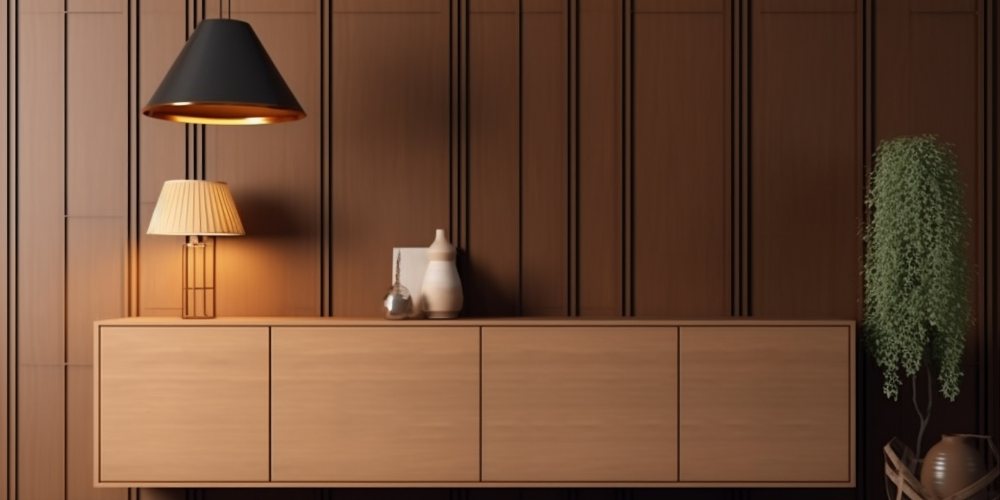Read this, and know how to plan a budget that’s workable for both you and your designer.
Setting up and deciding a budget is one of the most important parts of an interior design project.
For you, as the client, the use and importance of the budget is obvious – it sets a limit for how much you should expect to have to spend.
For your chosen designer, the budget is important as it gives them a clear idea of how lavish you want your space to be, and what luxury quotient they should aim for.
However, setting a budget isn’t that easy.
In our experience as interior designers in Bangladesh, we have often encountered clients deciding on a budget out of sheer guesswork, which leads to problems as their expectations turn out to be unrealistic, or factors crop up that they had simply not accounted for.
This is why we are publishing this blog post on demystifying how to discuss a project budget with your interior designer.
By reading through this article, you will understand the process of making a home/workplace decor budget so there will be little scope of confusion or misunderstanding when you discuss it with design professionals.
Plan a design concept
What is your vision for the space you want to design?
Do you have a liking for minimalistic design? Or would you prefer richer and more colourful decor styles?
Will you be installing things like accent walls? What kind of material do you want the floors to be made of?
Interested in flooring materials? Bookmark our blog post on the best materials to use on your home floor.
What kind of window covering (also known as “window solutions” in our industry jargon) do you want?
All of these will feed into the budget.
And, honestly speaking, a lot of clients are very surprised at how much their answers to questions like these influences the spending amount.
Looking to redecorate/revamp your home? Check out our home interior design service.
Draw up a detailed space plan
General questions about client preferences are only the first step.
The next step is to design a space plan.
Every space differs from every other space, and only a detailed space plan can reveal exact requirements.
What is the carpet area like? Are you going for accent rugs to cover larger carpets?
Will you have indoor greenery?
What will go on surfaces?
How much space will the cabinetry occupy?
To discuss custom cabinetry for your home, get in touch with our furniture design team.
Decide what quality you want in your home
Quality (aesthetics, ergonomics/efficiency and durability) is a key factor influencing an interior design budget.
Are you expecting a lot of sunlight in your home, and so need fabrics and materials to be resistant to fading?
Do you have children, and need special fabrics and materials?
Specialty materials can cost more, but can create longer-lasting spaces for you.
Planning for proper hygiene and comfort, even a bathroom can become a luxury space in your home. Visit our luxury bathroom design page to learn more.
Create a detailed list of requirements
With choices of space design, furniture and material choices made, it is time to create a list of requirements, against which market values can be assigned to create a credible budget.
You can work with your designer to research product prices. Online searching through Google is an invaluable source of price information.
A living room is one of the most important rooms in your house from an aesthetic point of view. And we can make luxury living room design really work for you!
Things you should remember to include in your calculations
- Did you remember to account for accessories when planning your list of requirements?
- Thumb Rule: Accessory cost can range from 6% to 12% of a particular main item. For example, accessories for your dining table can cost anywhere between 6% to 12% of the table cost.
- Installation charges for things like flooring, hardware, wallpaper, window coverings and so on.
- Taxes and fees.
Some tips to ensure a budget that works for you
Apart from Google and working with your designer, you can also get independent estimates of costs…from buildings, suppliers etc and also by visiting different showrooms.
Be honest with yourself about how much you can afford to spend.
Discussing the interior design budget – a final word
As you may have noticed, many of these steps are the same as the steps in an interior design project.
Here’s a blog post on a typical interior design project timeline, if you want more clarity on this.
So, you may be surprised at why this is so, or why we are publishing a separate post on discussing a home decor budget.
- The first reason is that many people tend to decide a spending amount without thinking about the actual work considerations.
- The second reason is that if actual spending projections exceed their estimates, clients start getting apprehensions about the work.
We want to be as transparent with you as possible, and to remove the barriers to you, as a client, making a logical assessment of how much money you spend on your project.
Hopefully, this post helps you do that.











